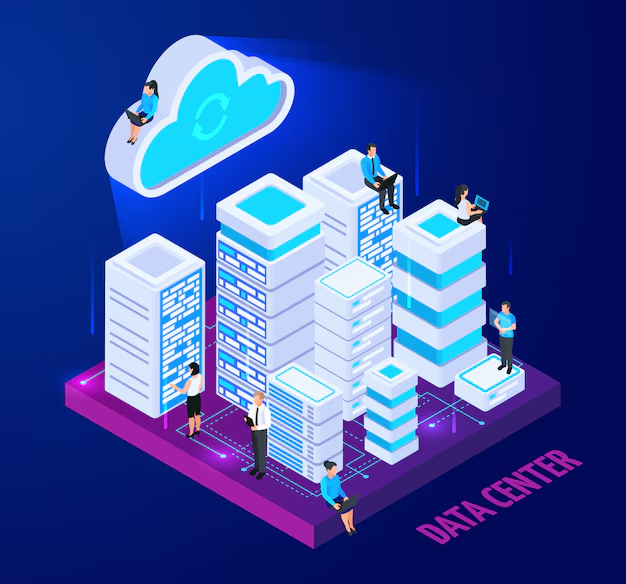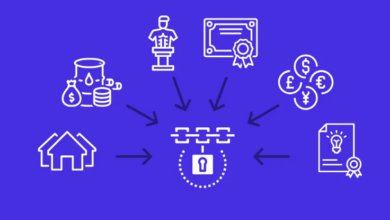How Certified Cloud Providers Enable Secure Digital Transformation for the Public Sector
Introduction
In an era where digital agility is not a luxury but a necessity, government agencies worldwide are rethinking how they deliver services to citizens. As the demand for secure, efficient, and scalable digital infrastructure intensifies, Microsoft Azure for Government has emerged as a strategic choice for public sector digital transformation. At the center of this transformation are certified azure consulting services who act as trusted partners, ensuring that public sector agencies can leverage Azure’s vast capabilities while maintaining the highest standards of compliance, security, and governance.
Empowering Public Sector Agencies with Secure Cloud Infrastructure
Government agencies operate in a complex environment where data protection, regulatory compliance, and mission-critical availability are paramount. Unlike commercial entities, public sector organizations are tasked with safeguarding citizen data, managing sensitive national records, and maintaining uninterrupted services even in times of crisis.
Azure for Government is a physically and logically isolated instance of Microsoft Azure designed to meet U.S. government requirements. It offers a comprehensive cloud ecosystem with built-in compliance for FedRAMP High, DoD Impact Level 5, IRS 1075, and more. However, unlocking the full potential of Azure for Government requires expert implementation, tailored configurations, and strategic oversight—roles perfectly filled by a certified azure cloud solution provider.
From onboarding and migration to ongoing support and optimization, these providers work closely with federal, state, and local agencies to ensure that every aspect of their cloud journey aligns with strict regulatory frameworks while driving operational excellence.
Modernizing Legacy Systems for Enhanced Efficiency
Many government agencies still rely on decades-old systems built on legacy infrastructure. These platforms are often fragmented, expensive to maintain, and prone to security vulnerabilities. Azure cloud providers specialize in modernizing these outdated systems by leveraging tools like Azure Migrate, Azure Stack, and Azure Arc.
Through a phased cloud adoption strategy, agencies can seamlessly transition from on-premises data centers to hybrid or fully cloud-native architectures. Key legacy systems such as financial management software, HR systems, and citizen service portals are reengineered using Azure App Services, Azure SQL Database, and containerized environments.
For instance, a state’s Department of Transportation can move its legacy permitting system to a cloud-native platform, improving uptime, accelerating application processing, and enabling mobile access for inspectors in the field. This level of agility and responsiveness simply isn’t possible in legacy environments.
Ensuring End-to-End Security and Compliance
Security is a top concern in public sector IT operations. Governments manage everything from social security data and healthcare records to criminal justice and emergency response systems. With Azure Security Center, Microsoft Defender for Cloud, and Sentinel, agencies gain powerful, AI-driven security capabilities.
But it’s the expert configuration and management of these tools that make the difference. Certified Azure partners provide:
- Role-based access control tailored to agency hierarchies
- Real-time threat detection and response strategies
- Automated policy enforcement and auditing
- Regular vulnerability assessments
This proactive, multi-layered approach significantly reduces the risk of breaches while ensuring compliance with strict data residency and governance standards.
Supporting Mission-Critical Operations with High Availability
For government operations—especially in areas like emergency response, defense, and public safety—downtime is unacceptable. Azure’s global availability zones and robust disaster recovery capabilities offer the reliability needed for mission-critical workloads.
Through the implementation of Azure Site Recovery, partners ensure agencies have real-time failover systems in place. In the event of a cyberattack, natural disaster, or unexpected outage, services can be restored with minimal disruption. Additionally, geo-redundant storage and automated backup services provide peace of mind that vital information is always protected and retrievable.
Driving Data-Driven Decision-Making with Analytics and AI
The public sector collects enormous volumes of data across services like taxation, transportation, education, healthcare, and law enforcement. However, siloed systems and outdated reporting tools often make it difficult to extract actionable insights.
Azure cloud providers help government agencies harness the power of data through integrated analytics, AI and machine learning platforms. Azure Synapse Analytics, Power BI, and Azure Machine Learning allow departments to visualize trends, predict outcomes, and make informed policy decisions.
Imagine a city government using traffic sensor data and Azure’s analytics tools to predict congestion and adjust signal timing in real-time, improving road safety and reducing commute times. These capabilities not only boost efficiency but also enhance public trust and satisfaction.
Building Citizen-Centric Digital Services
Today’s citizens expect government services to be as seamless and accessible as those provided by private enterprises. Whether it’s renewing a driver’s license, paying taxes, or applying for public benefits, users demand intuitive, mobile-friendly digital experiences.
Azure-powered portals and applications deliver these services through highly secure, scalable platforms. Cloud partners help government agencies design and deploy responsive citizen engagement systems using tools like Azure Kubernetes Service, Azure Logic Apps, and Azure API Management.
These platforms are built for high demand and feature self-service capabilities, multilingual support, and real-time status updates, making it easier for residents to interact with government services 24/7.
Enabling Hybrid and Edge Scenarios for Field Operations
Many public sector functions—such as law enforcement, public works, and emergency services—operate in the field and need access to data and applications at the edge. Azure’s hybrid solutions, including Azure Stack Edge and Azure Arc, enable secure, real-time data processing outside traditional data centers.
An Azure partner can help a police department deploy license plate recognition systems that run AI algorithms at the edge, immediately flagging stolen vehicles and issuing alerts. Or a public utility can monitor water quality sensors in rural areas using Azure IoT Hub, ensuring fast response to contamination risks.
By bringing computing closer to the point of action, hybrid Azure architectures empower public agencies to act faster and with greater precision.
Delivering Cost-Effective Scalability
One of the key challenges for public sector IT departments is managing tight budgets. Azure’s consumption-based pricing model allows for cost-effective scalability, where agencies only pay for the resources they use.
Azure partners help optimize cloud spend through:
- Right-sizing virtual machines
- Decommissioning idle resources
- Applying reserved instance pricing for predictable workloads
- Utilizing Azure Cost Management tools
With continuous monitoring and optimization, agencies can control cloud expenses while ensuring high performance and availability for critical applications.
Fostering Innovation with DevSecOps and Agile Delivery
Innovation in the public sector has historically been slowed by procurement cycles and rigid development practices. However, Azure’s DevSecOps capabilities—coupled with agile delivery models facilitated by experienced cloud partners—are changing the game.
Certified providers set up secure CI/CD pipelines using GitHub, Azure DevOps, and Azure Repos. This allows public agencies to build, test, and deploy new digital services rapidly while maintaining robust security controls. Updates, enhancements, and bug fixes can be rolled out iteratively, increasing the pace of innovation without sacrificing compliance.
Real-World Example: A County Government Goes Cloud-First
A large U.S. county partnered with an Azure cloud provider to migrate their data center, redesign their public service portal, and implement a hybrid IT model. With assistance from the provider, the county adopted Azure Virtual Desktop for remote employees, set up advanced threat protection, and integrated real-time analytics dashboards for emergency services.
As a result, the county reduced IT operating costs by 30%, improved citizen satisfaction, and was able to launch several new digital services within 12 months—an outcome that would have taken years under traditional infrastructure models.
Conclusion
Government agencies face immense pressure to modernize, secure, and streamline their operations while remaining compliant with complex regulatory frameworks. Azure for Government offers the foundation for this transformation, but its true potential is only unlocked through the strategic guidance of a certified azure cloud solution provider.
By enabling cloud migration, automating compliance, securing mission-critical workloads, and powering citizen-centric innovation, these partners are redefining what’s possible in the public sector. As digital expectations rise, the role of Azure solution providers will only grow more critical in shaping the future of government service delivery.





